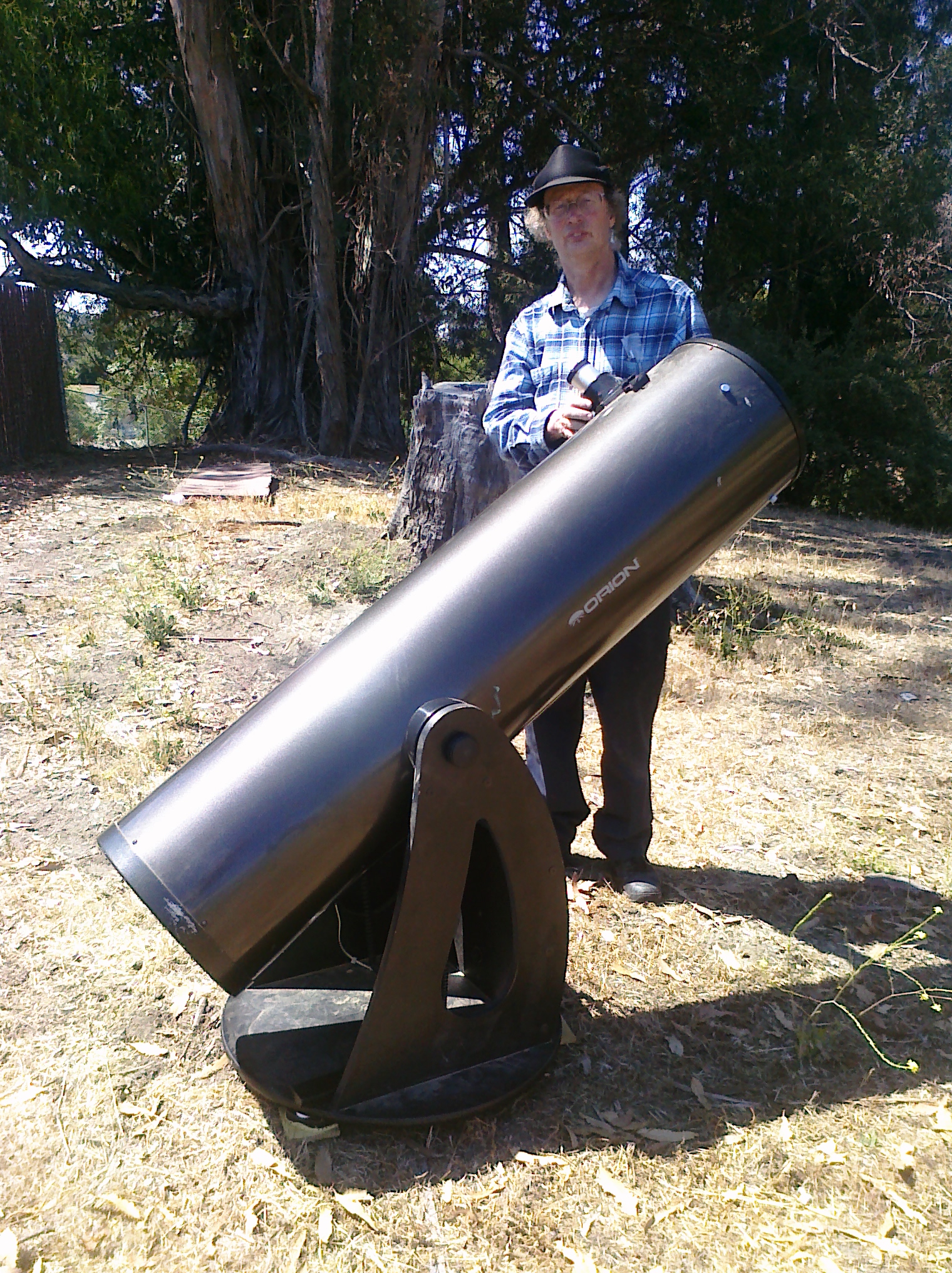
Although I am still fairly new to the club I have been interested in astronomy for many years. Born in 1958 I grew up alongside the space program. In the early 1960’s I lived in El Paso,Tx where my mom worked at White Sands Missile Range-apparently on classified projects as to the day she passed away she never would tell us what she did. I was told that I met Gus Grissom on one of his “Time” In The Barrel” assignments
My first serious introduction to astronomy came in 1970. A neighbor had one of the Orange C-8s and I first saw Saturn and its rings. The sky was a deep azure that I have never seen since. Saturn looked like a little jewel that you would swear you could put your hand out and pluck out of the sky.
In 1972 I got my first telescope (a Sears $30 special) for Christmas. It wasn’t up to anything really serious but I got my introduction to the Moon and Jupiter. My mom got a good laugh when I got my first good look at the moon and exclaimed that “Wow-It really is round”. I made up my own names for the area around the Apollo 11 LZ. I call the straight between the Sea of Nectar and The Sea of Tranquility the “Straights of Apollo” and the area between Moltke and the highlands the “Armstrong Passage”.
After taking astronomy under Dr. John Bowen at Cuesta College in the late 1970s I decided to try my hand at making my own 6″ Newt from a set of plans for an inverted fork equatorial from Astronomy Magazine. I wasn’t up to making my own mirror but everything else except for the secondary and spider I made from hardware store parts- such as an eyepiece holder made from a pipe flange and a sink drain. I couldn’t figure out how to properly secure the tube assembly and ended up using ropes to secure the tube to the platform. This was my first serious scope and I learned the Messier Catalog and began to follow some variable stars that Dr. Bowen had introduced me to in his class such as R CrB and R Leo (both of which I still follow). I also got to see my first Saturn Ring Plane Crossing in 1980. This one was actually a triple-crossing although I only remember seeing two of them. I also got interested in Eps Aur during its 1982 eclipse but my observations have unfortunately not survived.
I obtained a C-8 in 1985 and this turned out to be my workhorse for the next twenty-three years. I tried my hand at photography and got some decent images. I started to follow my variables in a more regular and systematic fashion when I found some good deep sky sites out behind Ft. Hunter Ligett. I tried experimenting with some digital setting circles but either I put them on wrong or the technology was still immature -or both. Anyway the performance was inconsistent. I went everywhere with this scope and it got pretty beat up being knocked around on forest service roads and the legs became rusty crusty from damp ground. Once at a school sidewalk astronomy in Paso Robles CCAS member Gus Nelson commented that with my little dings in the casing my C-8 looked the way all scopes should-very heavily used. In 2004 I started on the Herschel 400 list. I got all but 40 which I could not positively identify in my C-8. By 2008 the corrector on the front end had become pitted and the coating worn by years of exposure to Morro Bay air. It was time to upgrade
In the fall of 2008 I got my latest pride and joy-my 12″ Orion Intelliscope. With this one I was able to easily find those 40 Herschel 400 objects that had eluded me with my C-8. I am now able to follow many of my dimmer variables through their entire cycle. My personal best observations have been R CrB at mag 14.7 and NGC 7320 in Stephen’s Quintet (the latter at the Dancing Deer Ranch site on Jun 5 2010)
After attending a couple of the CCAS monthly events I joined in the fall of 2009 so as of this writing I am completing my “Rookie” year. I have found our monthly star parties at Star Hill the highlight of the month and have begun to schedule my camping trips to avoid missing these.
Dark Skies and Good Hunting!
David W. Majors
12″ Intelliscope
